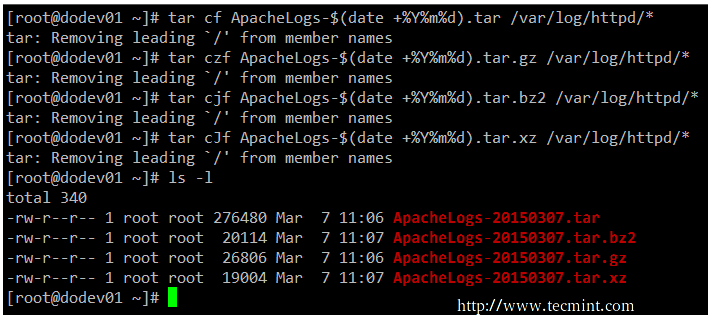

$ sudo apt install build-essential zlib1g-dev \ Step-by-step installation instructions Step 1: First, install development packages required to build Python. If Python is not installed on your Linux system, or you want to install an updated version, follow the steps below. Use the python -version terminal command to check whether Python is already installed and, if so, which version you have.
UBUNTU INSTALL TAR XZ HOW TO
You may not want to replace the default install of Python on your system just to test drive the latest one, so this article explains how to install the latest version of Python 3 on Linux without replacing the version provided by your distribution. But when you're working with Python every day, you sometimes want to stay up to date with the very latest version. If you're using Python, there's a good chance you're a developer (or want to become one), and Linux is a great platform for creating software. It's used nearly everywhere-from web development to artificial intelligence-really anywhere other than mobile development. Python is also a very versatile programming language.
UBUNTU INSTALL TAR XZ PROFESSIONAL
Python's simple syntax and low learning curve make it the ultimate choice for beginners as well as professional developers. Thanks.Python is now the most popular, most used programming language.

If you liked this post about How to Install tar.gz in CentOS, please share it with your friends on social networks or simply leave a comment in the comments section. Our admins will Install tar.gz in CentOS for you immediately.

Of course, if you are one of our CentOS Hosting customers, you don’t have to Install tar.gz in CentOS, simply ask our admins, sit back and relax. But right now, this is the “standard” way to install tar.gz files in Linux. Later on, you’ll see how to install packages so that you don’t have to rely on the good graces of the programmer for uninstallation.
UBUNTU INSTALL TAR XZ CODE
If the code is good however, you should be able to navigate to the installation folder as in Step 4 and type: sudo make uninstallĪnd this should remove the package from your system. If not, removing all the files that where installed can be a massive pain in the neck. Here you’ll have to hope and pray that the package developer has included an uninstall script. So let’s get started!Īs you can see, it works! We’ve successfully compiled and installed a Linux package! Step 7: Removing the Package If you don’t have a user capable of running sudo, then either you create one, or log in as root yourself.

If you’re not logged in as root (and ideally you shouldn’t be!), then you’ll need to use the “sudo” command. The final process of installing these files requires root permissions. Permissions to Compile and Install tar.gz Files But for now, we’re going to assume that the package you want to install is well made and adheres to the important coding standards. Later on, we’ll show you a safe way to do this so that you can remove packages completely even without an uninstaller. There might not be a default way to remove the package and all its files. However, packages in the wild might not be well made. To uninstall a package, we just need to type: yum remove xyz One of the reasons why package managers like yum are so useful is that they take care of cleaning up after you’re done. In this article, we’ll show you how to install tar.gz files using the traditional manner on a fresh CentOS install. There’s a lot of it lying wild out there, just waiting to be compiled and installed.


 0 kommentar(er)
0 kommentar(er)
